We recognise and celebrate the diversity of doctoral students here at Massey University. The academic community is teeming with scholars from different walks of life, different areas of expertise, different cultural backgrounds, and of course, different opinions. As we celebrate diversity, here’s what some of our PhD students in Wellington think of it.
Miles Crawford, Joint Centre for Disaster Research
Making sense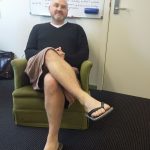 of diversity fits wells within my discipline of social science (psychology) where the diversity of how people think is integral for making a difference. I am studying how disaster risk is perceived, communicated and acted upon in local government and given this environment, diversity is very important both as a complicating factor, but also as a means for achieving robust decision making and action. The main problem with interacting with diversity of thinking and perspectives for my research is the difference in discourse between scientists, practitioners and policy makers, especially when communicating the subject of disaster risk management where terminologies, perceptions and understandings contrast depending on social, economic, political and cultural factors. Science is seen as ‘Certified’ and ‘Expert’, with scientists seen as external advisors without an understanding of the time frames and policy restrictions for practitioners. On the other hand, the practitioners are often seen as ‘Laypeople’ and ‘Unqualified’, that don’t understand, or don’t have the flexibility to give effect to the finer points of the science information provided. Given this environment, trust between the diverse participants is low and turning science into policy is very difficult.
of diversity fits wells within my discipline of social science (psychology) where the diversity of how people think is integral for making a difference. I am studying how disaster risk is perceived, communicated and acted upon in local government and given this environment, diversity is very important both as a complicating factor, but also as a means for achieving robust decision making and action. The main problem with interacting with diversity of thinking and perspectives for my research is the difference in discourse between scientists, practitioners and policy makers, especially when communicating the subject of disaster risk management where terminologies, perceptions and understandings contrast depending on social, economic, political and cultural factors. Science is seen as ‘Certified’ and ‘Expert’, with scientists seen as external advisors without an understanding of the time frames and policy restrictions for practitioners. On the other hand, the practitioners are often seen as ‘Laypeople’ and ‘Unqualified’, that don’t understand, or don’t have the flexibility to give effect to the finer points of the science information provided. Given this environment, trust between the diverse participants is low and turning science into policy is very difficult.
One way to overcome this barrier and “make sense of the diversity” is through participatory action research (PAR). PAR is an approach where participants with diverse backgrounds interact together on an equal footing to co-produce knowledge to solve a problem. This often takes the form of open meetings or focus groups, where the objective is for co-participants to follow a repetitive cyclic process to plan, act and reflect on how to solve the problem. Some benefits of following the PAR approach are that it enhances mutual awareness of compatibilities in participants’ interests and skills, it breaks down barriers between the ‘certified’ and the ‘uncertified’, repositions academic ‘Science’ as science, and facilitates trust. The results of following a PAR approach are relevant and legitimate to a diverse range of participants, as well as socially and environmentally just. It can also produce high quality research, and continue to be acted upon long after the participants controlling the process withdraw.
Miles is a PhD student within the Joint Centre for Disaster Research. He is about half way through his research into how risk informs natural hazard management, focussing on the interface between risk modelling for tsunami inundation and local government policy and procedure.
Victoria Quade, School of Communication, Journalism, and Marketing
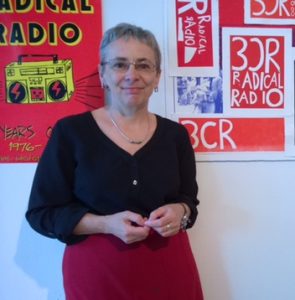 Diversity, literally and figuratively, means a range of different things. We all experience diversity in different ways at different times.
Diversity, literally and figuratively, means a range of different things. We all experience diversity in different ways at different times.
On a personal and social level, I experience diversity from the perspective of a 5th generation Australian. I have a fairly homogeneous Anglo-Celtic heritage (more pink and white than anything else). Whether I like it or not, this makes me an inheritor of the legacy of British colonialism in the Pacific.
At the same time I’ve always felt like an outlier – a person or thing differing from all other members of a particular group or set. This feeling of otherness comes from different sources: my family background – a childhood spent living in different countries which made me aware of different ways of doing things at a young age; my families’ values – strong on personal responsibility and social justice; my personal politics – a commitment to a more just and equitable society for all. Interestingly this feeling of being an outlier has always made me feel more connected to people who are also outliers from the dominant society.
Equally interested in education and media work, Victoria is enrolled as a PhD candidate in Massey’s School of Communication, Journalism, and Marketing. An ex-film and video editor, she teaches English as a second language part time. Victoria describes herself as an accidental migrant who came to New Zealand more than 30 years ago. As well as her studies for her PhD, she is learning how to parent a teenager as her son Felix becomes one. She enjoys, coffee and conversation about most things.
Christie Satti, School of Public Health and School of People, Planning, and Environment
Is the way we make sense of diversity limiting our imagination as researchers?
As a grad student and a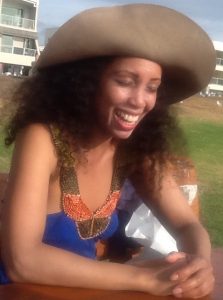 s a mom I do a lot of soul searching about the meaning of things – in one sense this strengthens my capacity as a researcher for reflexive inquiry and as a parent, helps me to grapple with presenting an honest portrayal of the world that is always age appropriate. Mundane activities in this regard, come to life for me in intersectional ways. While my journey to complete my doctorate degree too often pulls me away from being fully present in day to day interactions with my loved ones, as I am often in the clouds thinking about my research study, I have gained some insights into how to think about things.
s a mom I do a lot of soul searching about the meaning of things – in one sense this strengthens my capacity as a researcher for reflexive inquiry and as a parent, helps me to grapple with presenting an honest portrayal of the world that is always age appropriate. Mundane activities in this regard, come to life for me in intersectional ways. While my journey to complete my doctorate degree too often pulls me away from being fully present in day to day interactions with my loved ones, as I am often in the clouds thinking about my research study, I have gained some insights into how to think about things.
Here’s an example from my life, where reading a bedtime story aloud lead me to reflect and critique my own research practices: is the way that I make sense of diversity, limiting my own imagination? This bedtime story stars Katie, an adventurous girl whose quest for knowledge sends her on a brave journey into the unknown. So far, so good. Katie’s adventure takes a twist and she is shuffled into prehistoric times, where she confronts a living dinosaur. Here is their very first interaction: “Hello” said Katie “Who are you?” “Hadrosaurus” said the dinosaur. What spoke to me directly about this interaction is the perspective from which it was told. The dinosaur is seen through the gaze of Katie. The way that Katie makes sense of this new character is an articulation of her categorization of self and other. As a well-studied little girl, she quickly recognizes her new companion, in scientific nomenclature. How she makes sense of her contact with this friendly ancient animal, gives the audience much in which to infer about Katie – perhaps most clearly about the quality of education she has received. While insight may be gleaned about Katie’s perspective, it can also be said that we learn little about our friend Hadrosaurus.
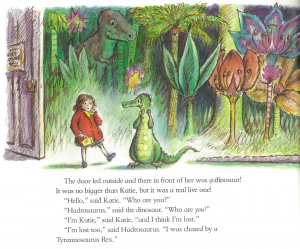
Image: Mayhew, J (1991). Katie and the Dinosaurs. Orchard Books: London.
Much of research is conducted in this way – a scientific expedition, in which an omniscient researcher/narrator imposes her own categories – frameworks, beliefs, models and theories – onto her research subjects. In fact, an entire research field exists dedicated to exploring this phenomenon. Do research participants have much to contribute in the way of shaping the research perspective? Would participants choose the same sorts of evidence and draw similar conclusions from the data? To what extent do our study limitations reflect the diversity, or lack thereof, of perspectives about the subject of inquiry? I’d like to remind that in our quest to achieve evidence-based science as researchers, we mightn’t forget about Katie and the dinosaur – and that we too have arrived with our own peculiar perspectives
Christie Satti, MPH is a doctorate research student in the school of public health and school of people, planning and environment. Her doctorate research is an exploration of how diversity can inform evaluation practice, informed by two methodological approaches to sensemaking, Q methodology and sensegiving. Her research study includes action research principles – which means that you may see her flittering about everywhere, desperate to make sure that people actually find this work relevant.
Nancy Brown, Joint Centre for Disaster Research
Diversity has bec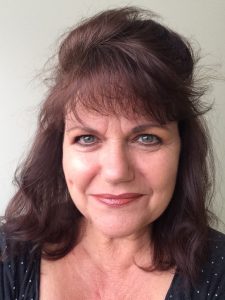 ome a buzz word, used in policy and decision-making in private and public organisations, schools, churches, and even military recruitment. The need to provide a welcome and positive environment to expand the diversity of those involved in these institutions is discussed, supported and even mandated in many cases. While some organisations fall short of the mark, many are working to give increased diversity the best possible environment to grow. Offering special facilities for prayer, gender sensitive toilets, pledges, and broader menus to include dietary restrictions are all part of organisations efforts to improve their diversity- and once improved provide an environment of acceptance for their diverse group. The question is, why? Why do we seek to diversify our groups, embrace outliers, and welcome those from different social groups? Why do we care about diversity?
ome a buzz word, used in policy and decision-making in private and public organisations, schools, churches, and even military recruitment. The need to provide a welcome and positive environment to expand the diversity of those involved in these institutions is discussed, supported and even mandated in many cases. While some organisations fall short of the mark, many are working to give increased diversity the best possible environment to grow. Offering special facilities for prayer, gender sensitive toilets, pledges, and broader menus to include dietary restrictions are all part of organisations efforts to improve their diversity- and once improved provide an environment of acceptance for their diverse group. The question is, why? Why do we seek to diversify our groups, embrace outliers, and welcome those from different social groups? Why do we care about diversity?
Let me share some personal thoughts of why diversity matters. It all starts with dinner. Imagine if you will that the only choices for food were those native to your own family’s heritage. For most of us this is a very narrow bit of choices, most similar to each other and certain to lack diversity. Now, if this is all you ate you would be able to survive and be nourished, but is that enough? Why did Marco Polo travel such lengths to gather spices? Because human beings crave diversity! We want new tastes, interesting textures, and to be surprised, delighted, and even occasionally disappointed. Nothing makes us happier than an international food festival, with taste from all over the globe to sample and experience. We are built, from our very core, to seek out new and interesting things. The variety of restaurants available in even a small town is evidence that good enough just is not.
So, when you think about diversity, consider all your favourite meals, and the places they all originate. That should steer you toward an exciting realisation, diversity is truly the richness that brings so many things special and real meaning. Having access to different races, religions, genders, and even ages offer an opportunity to understand and explore more about the world we live in, and to enrich your own thoughts and perceptions, as food enriches you table.
Nancy A. Brown is a PhD candidate at Massey University, Wellington. Her topic of study is: How can the hotel sector increase their disaster resiliency, and be better able to protect the lives of their guests and staff, and the livelihoods and local economy following a disaster? Education includes Master of Science degree in Emergency Services Administration and a Bachelor of Arts degree in Public Relations, Journalism both from California State University, Long Beach, CA, USA. Nancy has a diverse background, most recently in the hotel industry as an Emergency Preparedness Coordinator. Working for many international hotel companies including Disney, Marriott, Westin, and Hyatt provided Nancy with a practitioner understanding of hotel operations, and fuels her passion to work on this project.
To you, what is diversity?
Like us on Facebook. Follow us on Twitter.
Interested in gaining more perspective? Click on Writers block and other challenges facing doctoral students to read more.
